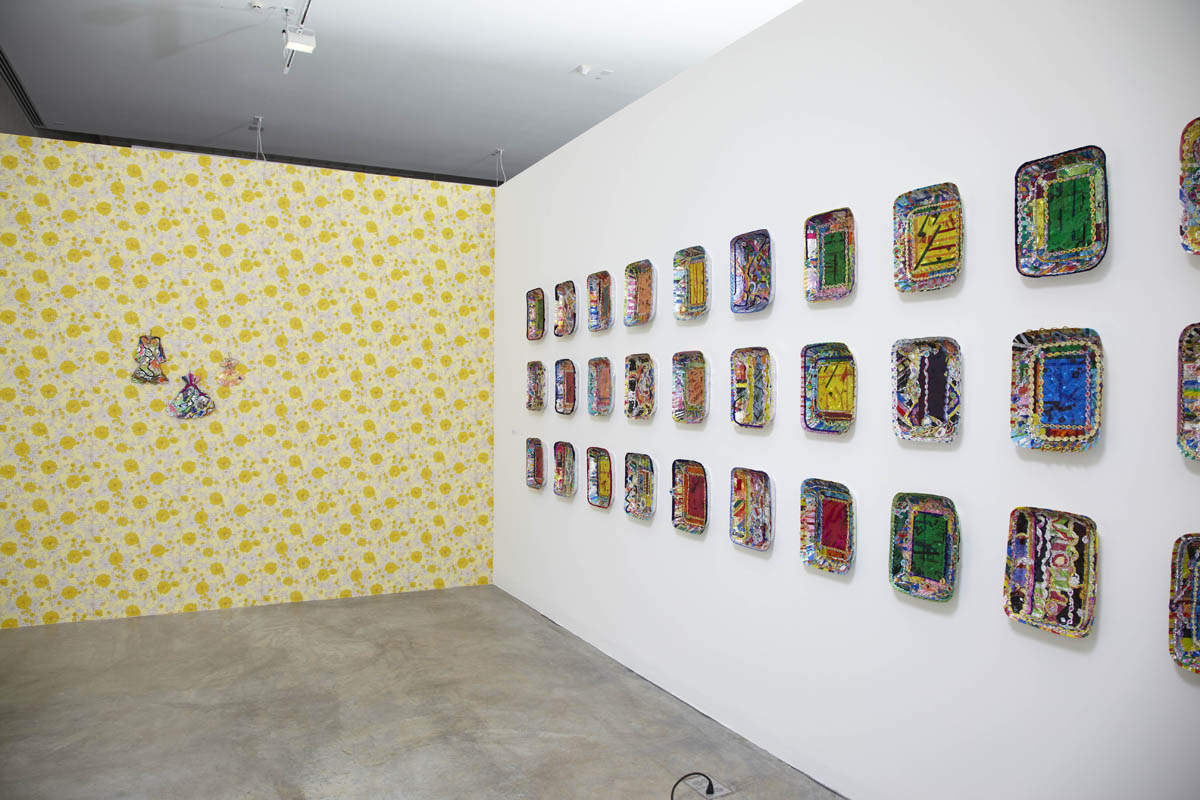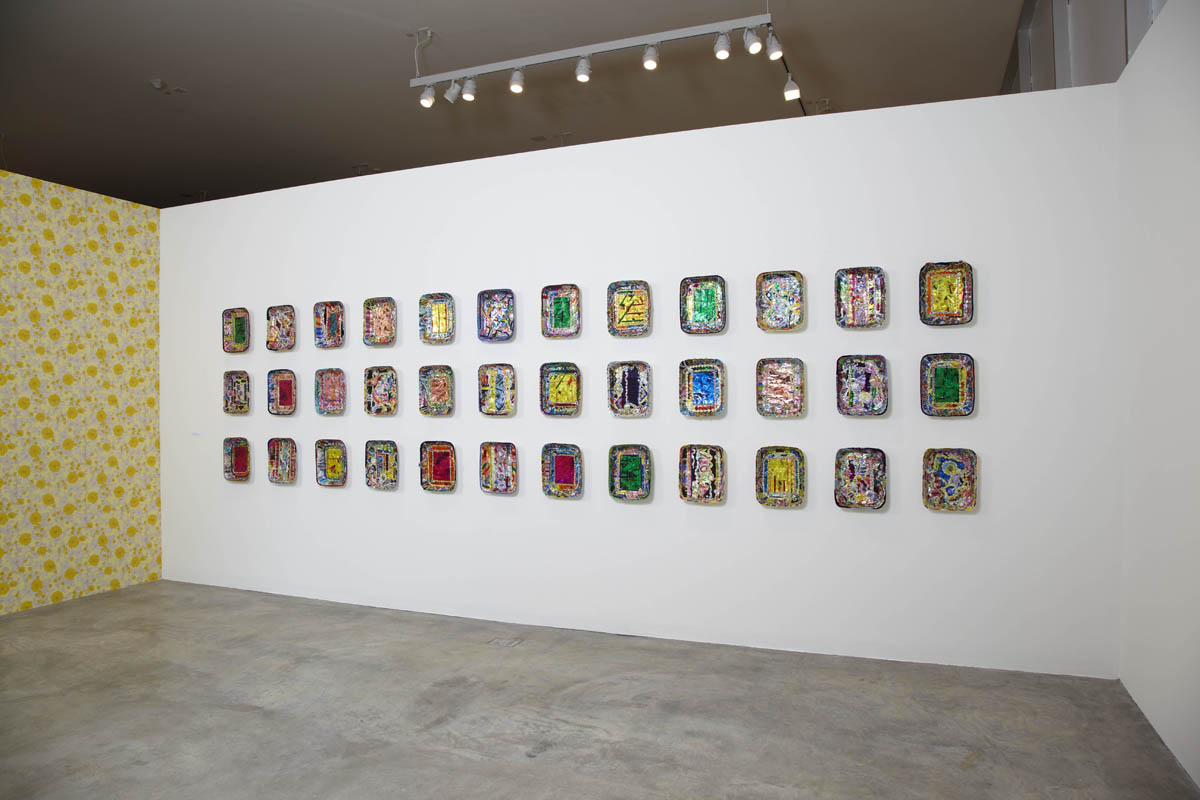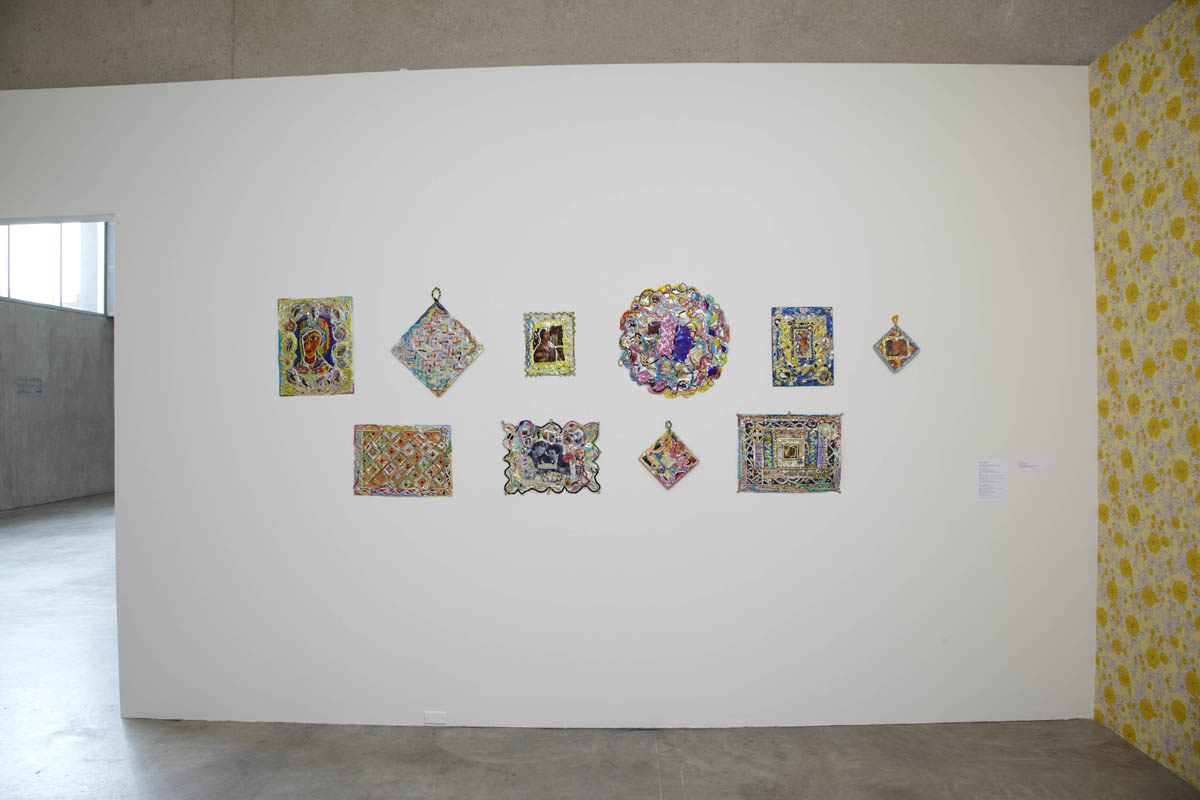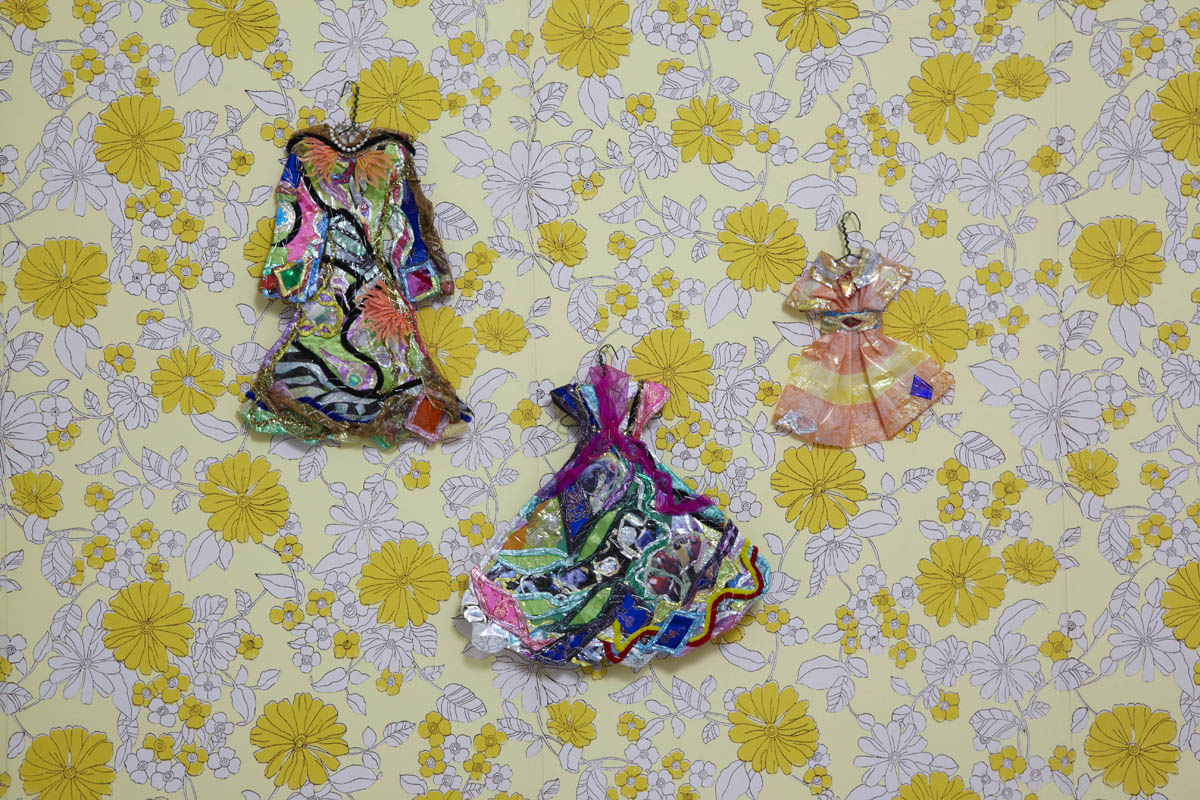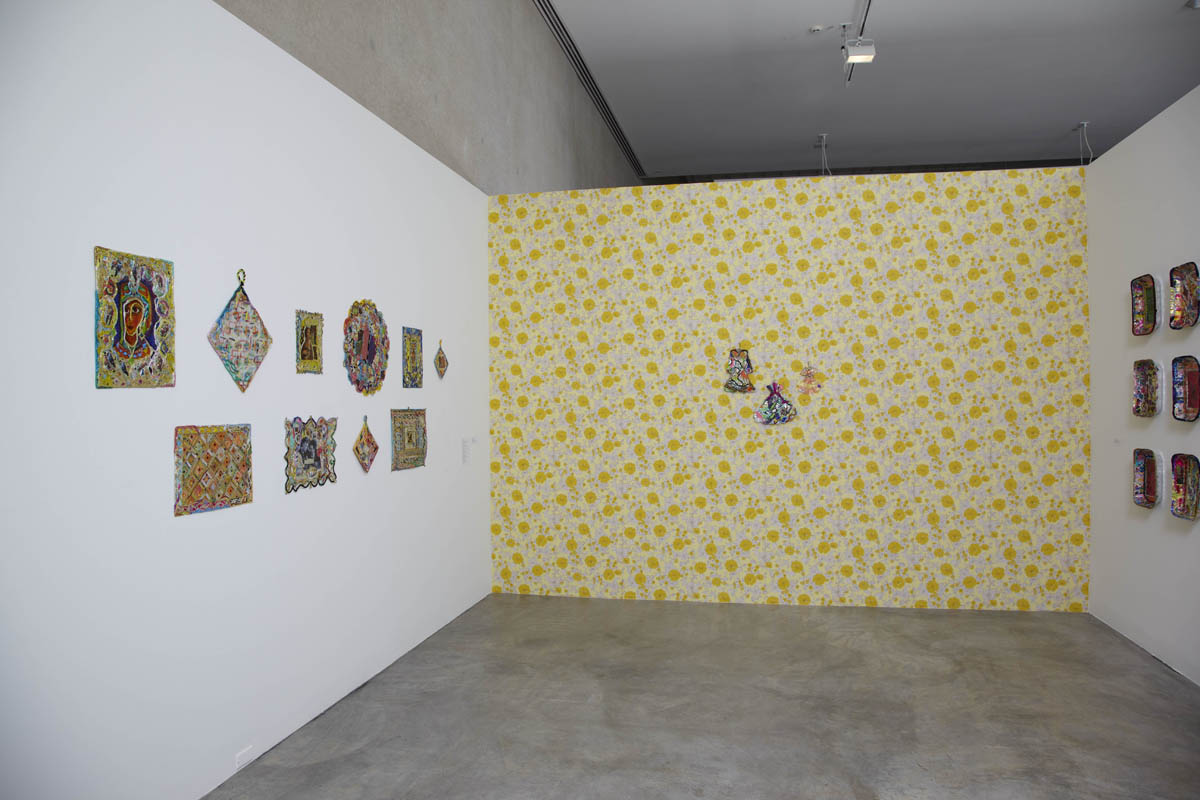Thomas Lanigan-Schmidt mines culture’s margins for a sense of the ecstatic. In his work, plastic wrap, trash bags, tape, staples, pipe cleaners, coupons, magazine cut-outs, the rare rhinestone, and other found debris are forged into Baroque exuberance. His creative practice is the direct correlate to the condition of the Catholic working-class from which he comes, finding faith in the immaterial and transcending constraints through necessity and ingenuity.
The dense surfaces of these collaged pieces resemble Mid-American immigrant grottoes (made of sea shells and concrete) and the kind of ad hoc sacred objects covertly fashioned during historic periods of iconoclasm. Pot-holders commemorate and diffuse the heat of things desired; place mats hold the place of memory and loss. Lasagna pans recall expedient full-family service and the domestic scale of a TV dinner tray. Tin foil patens-plates, usually silver, which hold the Eucharist during Catholic mass-and other ritualistic forms are synonymous with prized household decorative accents.
Lanigan-Schmidt’s preferred measurement is the foot and the inch, in its bodily analogue and humanist imprecision. And, as in his early performance and installation work, his preferred gallery is the bedroom, with its lamp-shaded lighting and bedside tables set with framed snapshots. A penchant for layered patterning recalls the plaid weave of a kitchen table oilcloth as well as Byzantine mosaics. References range from St. Augustine to deceased former lovers, the artist’s multi-ethnic neighborhood to Clement Greenberg, Victor Mature, Lacanian theory, and Liberation Theology. Reflective, glittering, and iconoclast in spirit, the work’s intricate idiosyncrasies and Technicolor luminosity speak plainly of sexuality, the conflict of faith, and sentiment’s capricious command.
Thomas Lanigan-Schmidt: The True Praxis of Dotty Page, Willy Nilly & the Book of Roof, Read Daily by Savant in the Cathedral of St. Anamnesis, & the Sacred Dentures of Emma Street is organized for the Contemporary Art Museum St. Louis by Jessica Baran.
